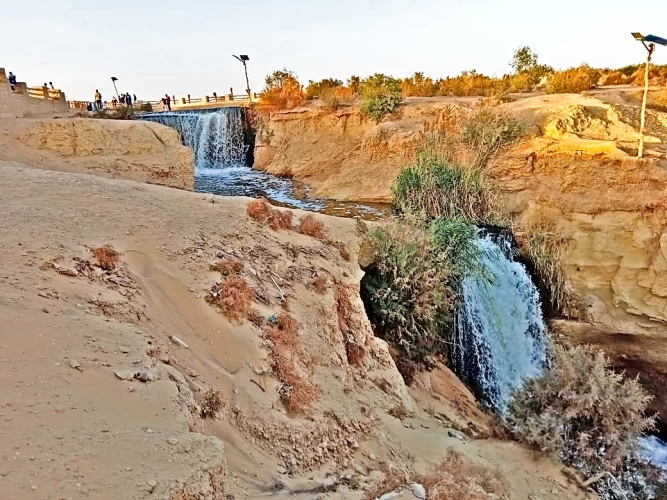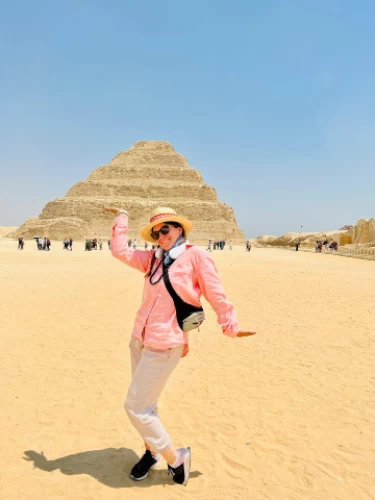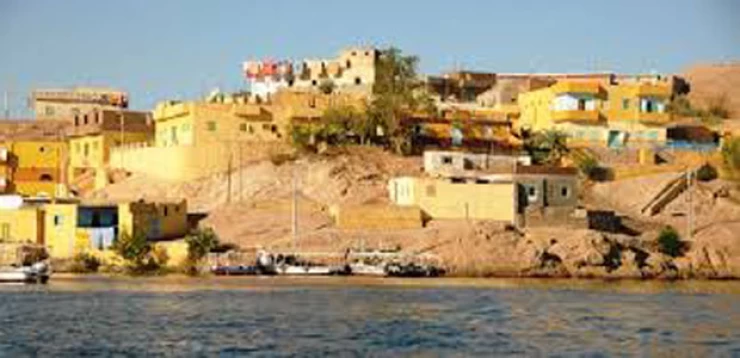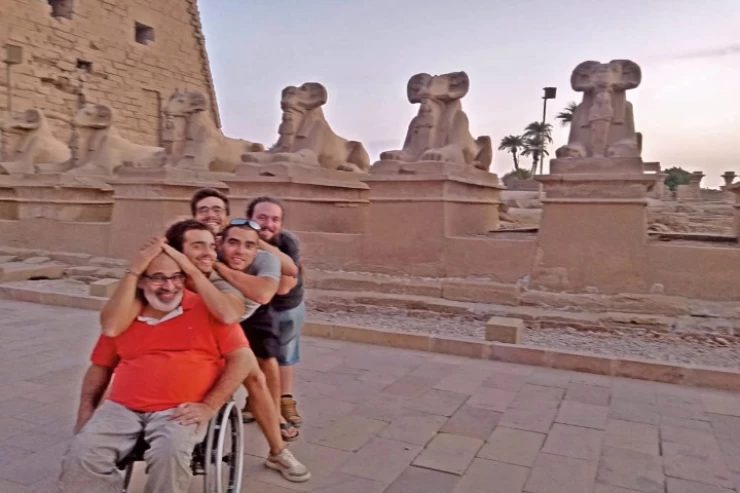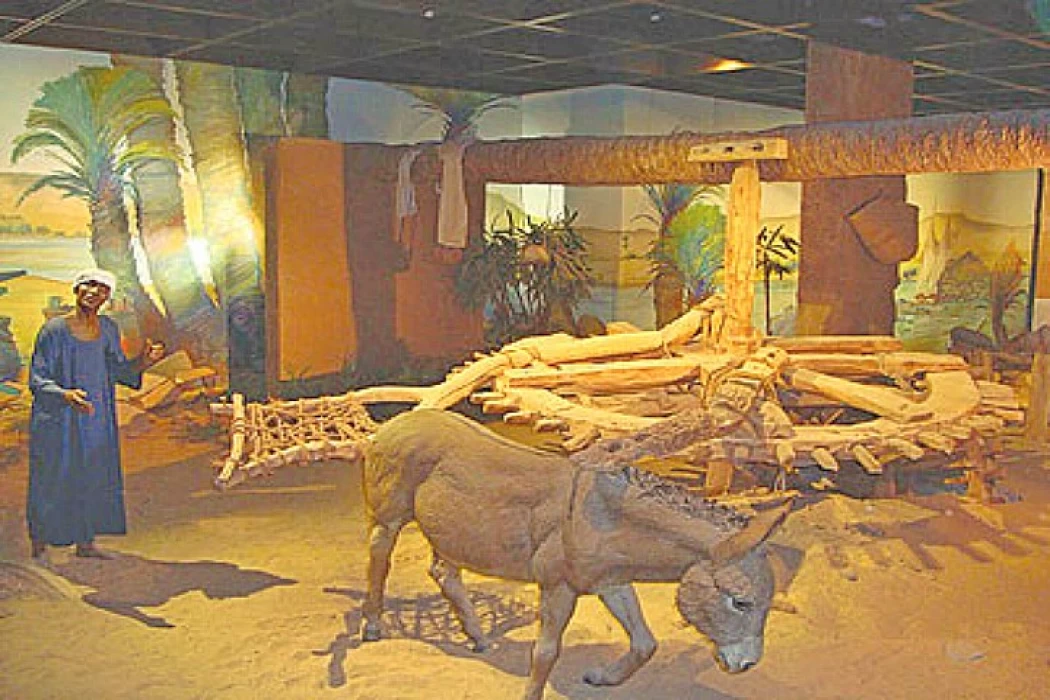
L'ancienne Nubie | L'histoire du royaume de Nubie
Nubie (arabe nuba) Région du nord-est de l'Afrique, située entre l'Égypte et le Soudan, traversée longitudinalement par le Nil, limitée au nord par les écluses d'Assouan, à l'est par la mer Rouge, au sud par le confluent du Nil Bleu et du Nil Blanc, et à l'ouest par le désert de Libye. Ce n'est qu'à proximité immédiate du Nil, interrompu par six écluses, qu'une bande de terre arable est traversée par des voies ferrées ; c'est là que se trouvent les principaux centres : le Berbère, centre des caravanes vers la mer Rouge, au confluent de l'Atbara ; l'ancien centre de Wadi Halfa, à la frontière de l'Égypte et du Soudan, a été inondé après la construction du barrage d'Assouan.
Au début de l'ère historique (3500 av. J.-C.), alors que la civilisation égyptienne acquiert des caractéristiques de plus en plus indépendantes, un sous-néolithique tardif (les cultures dites "des groupes A et B") se poursuit en Nubie, qui à la fin de l'Ancien Empire (2250 av. J.-C.) se transforme en une production céramique autonome et riche (la culture dite "du groupe C", qui constituera le fond initial de tous les chevauchements de la culture égyptienne du Moyen Empire et du Nouvel Empire).
L'Ancien Empire ne s'intéressait qu'à l'exploitation des mines d'or de la terre nubienne ; au Moyen Empire, les expéditions militaires entreprises pour protéger les frontières méridionales du pays et les routes commerciales ont conduit à la construction d'une série de forteresses égyptiennes le long du fleuve jusqu'à Semnakh, au sud de la deuxième cataracte, sans processus d'amalgame avec la population indigène, ce qui a conduit à la création d'une culture de céramique autonome et riche.
Nubia (Arabic Nuba) A region of northeastern Africa, located between Egypt and Sudan, crossed longitudinally by the Nile, bounded on the north by the Aswan Locks, on the east by the Red Sea, on the south by the confluence of the Blue Nile and the White Nile, and on the west by the Libyan Desert. Only in the immediate vicinity of the Nile, interrupted by six locks, is a strip of arable land crossed by railroads; here are the principal centers: the Berber, the center of caravans to the Red Sea, at the confluence of the Atbara; the old center of Wadi Halfa, on the border of Egypt and Sudan, was inundated after the construction of the Aswan Dam.
At the beginning of the historical epoch (3500 B.C.), while Egyptian civilization was acquiring more and more independent features, a delayed sub-Neolithic (the so-called "Group A and B" cultures) continued in Nubia, which at the end of the Old Kingdom (2250 B.C.) developed into an autonomous and rich ceramic production (the so-called "Group C" culture, which would form the initial background of all overlaps of Egyptian Middle Kingdom and New Kingdom culture).
The Old Kingdom was interested only in exploiting the gold mines of the Nubian land; in the Middle Kingdom, military expeditions undertaken to protect the country's southern borders and trade routes led to the construction of a series of Egyptian fortresses along the river as far as Semnakh, south of the second cataract, without a process of amalgamation with the indigenous population or forms of expansion. Under the New Kingdom, under Thutmose I (1504-1492 BCE) in the
Nubian culture does not reflect the connotations and beliefs of its people. Tattoos are considered cultural symbols of Nubia for both men and women, as are murals, beadwork, and palm-frond and wickerwork, which attract tourists, especially foreigners.
The decorative elements, according to the State Information Service, carry specific connotations. The sword symbolizes heroism and courage, while the crescent and star symbolize optimism. The crow and owl are also symbols of bad luck and destruction.
It is called the Land of Gold. The name Nubia is derived from the word (Nub), which means gold in ancient Egyptian. It was also famous for the gold mines that were called Nubaria. In the dictionary, we find that the word Nub means: a generation of people living in a country named after them and located in the southern part of Egypt.
In another sense, the name is attributed to Nabata, the son of the Prophet Ishmael, peace be upon him, and since their rule of the Nile Valley and Africa, they mixed with the local tribes. Over time, many of the African tribes that were under the rule of the Nabataeans took the same title. It is now noticeable that there are dozens of tribes of different races under the same title, with different tongues, and the same title remained, which is the Nubians (Nuba).
It is a Nilo-Saharan language of the Eastern Sudanic branch in southern Egypt and northern Sudan. Most of its speakers lived in the Nile Valley, in what became Lake Nasser after the construction of the High Dam south of Aswan. Its speakers number approximately one million.
Between the eighth and fifteenth centuries AD, Nubians wrote their language in the Coptic alphabet with a few additional letters. However, today, they rarely write it, and those who write Nubian use Arabic or Latin script.







